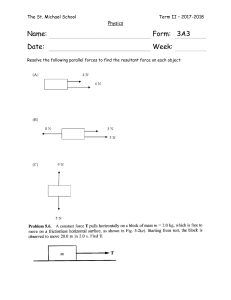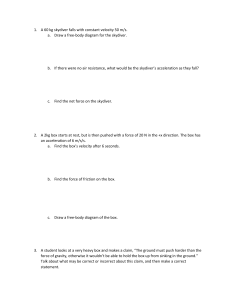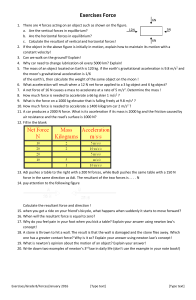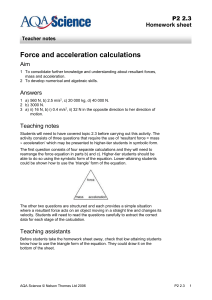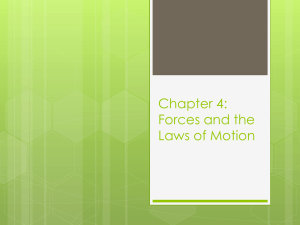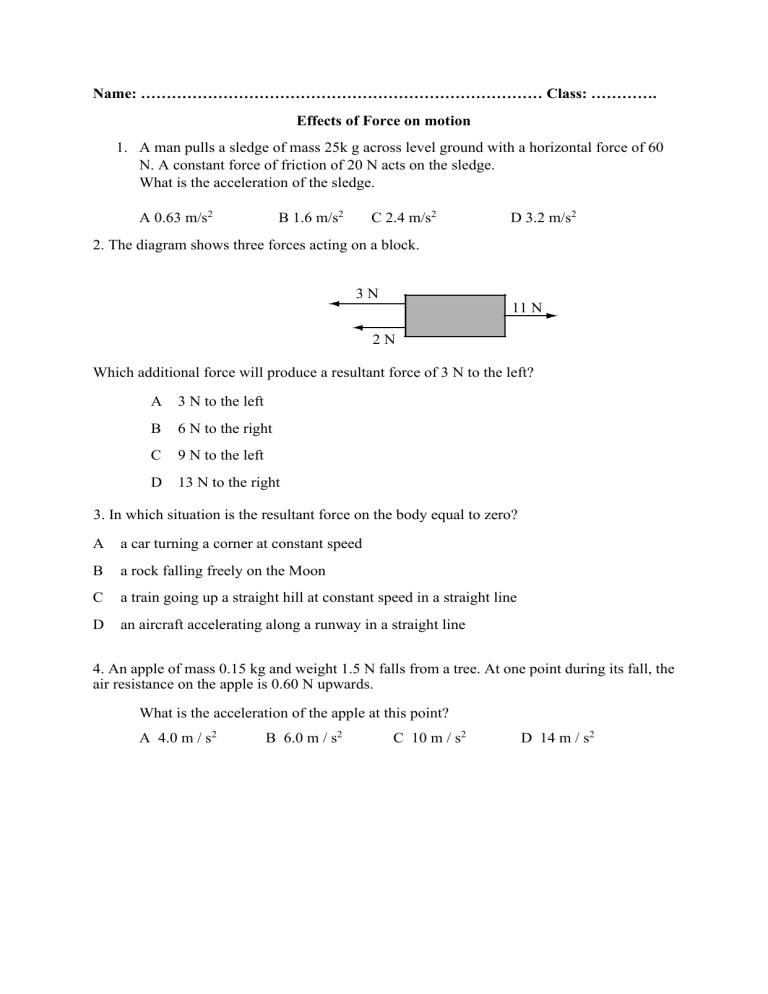
Name: …………………………………………………………………… Class: …………. Effects of Force on motion 1. A man pulls a sledge of mass 25k g across level ground with a horizontal force of 60 N. A constant force of friction of 20 N acts on the sledge. What is the acceleration of the sledge. A 0.63 m/s2 B 1.6 m/s2 C 2.4 m/s2 D 3.2 m/s2 2. The diagram shows three forces acting on a block. 3N 11 N 2N Which additional force will produce a resultant force of 3 N to the left? A 3 N to the left B 6 N to the right C 9 N to the left D 13 N to the right 3. In which situation is the resultant force on the body equal to zero? A a car turning a corner at constant speed B a rock falling freely on the Moon C a train going up a straight hill at constant speed in a straight line D an aircraft accelerating along a runway in a straight line 4. An apple of mass 0.15 kg and weight 1.5 N falls from a tree. At one point during its fall, the air resistance on the apple is 0.60 N upwards. What is the acceleration of the apple at this point? A 4.0 m / s2 B 6.0 m / s2 C 10 m / s2 D 14 m / s2 5 The speed-time graph for a falling skydiver is shown below. As he falls, the skydiver spreads out his arms and legs and then opens his parachute. Which part of the graph shows the skydiver falling with terminal velocity? 6. The diagrams show a parachutist in four positions after she jumps from a high balloon. At which position does she have terminal velocity? 7. The diagram represents the Moon in its orbit around the Earth. Which arrow represents the direction of the resultant force acting on the Moon at the instant shown? 8. The diagram shows an aeroplane turning in a horizontal circle at constant speed. In which direction is there a resultant force?
